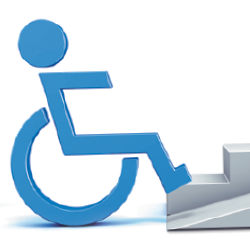Labor unions limit exhibitors' ability to do certain things, from vacuuming booth carpet to plugging in monitors. Read on to learn about the various unions and what you can and can't do during installation. By Candy Adams

hen I first started in the exhibit industry, I was surprised at all the relatively simple tasks
that I was forbidden to perform, like attaching hook-and-loop fasteners or
plugging in a lamp.
But how are exhibitors supposed to know what they can and can't do when it seems like the rules are different at every trade show, in every venue, and with every union? You can start with this primer, featuring a list of common types of union labor, the levels of installation-and-dismantle labor you'll encounter, and some exclusions from union jurisdictions — those areas where exhibitors might avoid hiring union labor by asking questions about local jurisdictions.
The Unions
Labor unions provide a pool of workers with different areas of expertise. For example, depending on the labor unions in the show city, the person setting up and dismantling your exhibit may be a carpenter, a decorator, or even a Teamster. There are other more specialized unions in some cities, such as carpet layers, stagehands, and even plumbers. Although the names of the local unions will vary, here are the most common union laborers you'll encounter at U.S. convention centers, along with a summary of the work they perform.

Audiovisual technicians are responsible for projecting images on screens, raising/lowering scenery, positioning microphones, creating/editing sound effects, controlling equipment that regulates sound and picture quality, and adjusting lights.

Carpenters perform the uncrating, installation, dismantling, and recrating of exhibits, displays, and backgrounds. Carpenters use bolts, screws, or nail-fastener material and often have jurisdiction over laying carpet pad, carpet, and floor tile. In some cities, decorators perform this work.

Carpet layers have jurisdiction over carpet padding and placing protective carpet coverings. They sometimes install other floor surfaces.

Decorators may install and dismantle exhibits, and perform dressing services for a show and/or its exhibitors including installation of pipe and drape, draped cloth, table skirting, and wall drapes. They also hang signs, banners, and flags. Depending on local union jurisdictions, carpenters and sign painters may perform these services instead.

Electricians are responsible for connecting anything that uses electricity. This might include installation and removal of electrical wiring, electrical hook-ups, interconnections, distribution panels, electrical signs, TV/monitor/video and communications connections, sound systems, and lighting equipment. Extensive audiovisual setups may also require projectionists, AV technicians, and stagehands.

Plumbers are in charge of assembling, installing, and dismantling plumbing for compressed air, water, waste, drainage, gas lines, tanks, and venting. They also have jurisdiction over installing heating and refrigeration units and may store, handle, and connect bottled gas.

Porters generally sweep, clean, dust, and remove trash from exhibits.

Riggers do machinery uncrating, unskidding, positioning, leveling, and reskidding. They may be responsible for overhead work including installing theatrical lighting, hanging signs, erecting structured steel and truss, and operating specialized equipment for heavy construction. Carpenters perform some sign-assembly functions in select areas, and electricians will be involved with hanging signs that rotate or have internal or external lighting.

Stagehands handle programmable or dimmable theatrical lighting, laser lighting, video walls, special-effects equipment, productions, and related rigging and AV equipment. In some jurisdictions they also perform I&D, lay carpet, and set pipe and drape.

Teamsters usually maintain jurisdiction over freight unloading, loading, and moving in and out of the exhibit hall or show venue. In some union cities, Teamsters also take care of nonelectrical hanging signs, exhibit I&D, and decorating.

Union stewards (aka shop stewards) are the onsite union officials elected by their rank-and-file co-workers to oversee the union's work at a facility. This includes looking for violations (i.e., when work in their jurisdiction is not being provided by their union members), defending their right to perform the duties, and resolving any disputes.
The Players
Now that you're familiar with the types of unions and their general responsibilities, it's time to get to know the types of laborers you'll encounter. Union members are organized by experience level, with each person assigned one of four titles: lead, journeyman, apprentice, or day laborer.
The most experienced person on the crew is known as the lead. He or she directs the activities of the entire labor crew. Leads are the exhibitor's primary liaison for all setup and dismantle issues, and are generally paid the highest union-labor rate plus a $1 to $2 per-hour incentive.
One step below the lead is the journeyman, or "A" level, which has fully served an apprenticeship in a trade or craft. The number of months or years necessary to serve an apprenticeship before gaining official journeyman status varies greatly by union and city.
 Say What?
Say What?
Learn the language of laborers with this handy glossary of common terms.
Next is the apprentice or "B" level. An apprentice is learning a trade or occupation through a combination of classroom and on-the-job training as a member of a labor union.
Finally, a day laborer or "C" level is nonunion labor hired through a temp agency or off the street. Day laborers typically work by the day or hour for wages with no added pay or benefits.
Although exhibitors pay one flat rate for all levels of labor (unless they choose to have a supervisor assigned to setup or dismantle, which adds approximately 25 percent to the setup cost), each level of labor is paid based on its experience, union contract, and benefits package.
Union laborers are hired by the general services contractor (GSC) or by an exhibitor-appointed contractor (EAC) to perform your I&D labor. The GSC and EAC contractors may hire union laborers and maintain them on their payroll as full-time employees, or hire them as needed through their local union hiring hall. When the need arises for additional labor, I&D labor providers hire workers through the same hiring hall. For example, in a week's time, the same I&D laborer could work for the GSC at a trade show on one day and four different independent I&D contractors the rest of the week.
The Jurisdictions
At this point, you may be asking, "What may exhibitors do without the assistance (or as it seems in some cases, interference) of union labor?" You have to do your homework. Read the labor section of your exhibitor services manual to determine what unions you'll encounter when you arrive at the venue, and what control they have over various jobs at the show. If you haven't noticed, the section of the exhibitor services manual that tells you about the unions who work at the facility where the convention is being held never tells you what you may do, only what the unions' jurisdictions are and what you may not do.
Next, look for any information on what on-floor tasks exhibitors are allowed to perform. If this information isn't readily provided in your exhibitor services manual, ask show management's operations manager for this information. If the ops manager can't answer your labor-related questions, contact the labor supervisor who is working on your show for the GSC, and request the information.
After working at more than 400 trade shows in the last 20 years, I've compiled a list of the general guidelines for what employees of an exhibiting company may be able to do without the assistance of union personnel in many of the largest U.S. cities with convention facilities. This isn't to say you will necessarily be allowed to perform all of these tasks, but it never hurts to ask since union labor comes at a price.
 Material handling/drayage:
Material handling/drayage: You can usually hand carry in one load of exhibit properties from a designated location (generally not the shipping dock) to your booth space. Depending on the local union rules, use of a two-wheel luggage cart may be allowed; four-wheel dollies and carts are usually prohibited.
 Installation and dismantle:
Installation and dismantle: As long as your exhibit doesn't exceed 10 feet in width or 8 feet in height, or cover a booth space of more than 100 square feet, you can install/dismantle it yourself. Such properties have to be installed/dismantled by one full-time employee of the exhibiting company in 30 minutes or less without hand tools or ladders. Some unions allow a 1-to-1 or 1-to-2 ratio of exhibitor-to-union labor to perform I&D tasks.
 Labor supervision:
Labor supervision: You may use your own personnel as supervisors of contracted union labor. Specific ratios of union laborers to exhibitor-provided supervision may be spelled out in local union agreements.
 Electrical work:
Electrical work: In the majority of convention facilities, you are allowed to plug in electrical devices (equipment and lighting) to a 120V electrical outlet of 20 amps or less.
 Lighting:
Lighting: You can usually install light bulbs and hanging lights as long as no tools and ladders are used.
 Cabling:
Cabling: You are allowed to run your own communication cable between machines (e.g., connecting computers, badge scanners, keyboards, printers, and credit-card readers) above the booth carpet.
 Equipment:
Equipment: You can set up, test, and tune equipment as long as it is your product or used to run your product.
According to the unions that allow exhibitor participation in setup and dismantle, any person performing the work listed above must be a full-time employee of the exhibiting company and must carry identification to verify that fact. Employees of exhibit houses or third-party service providers are not allowed to perform these tasks.
By knowing what you're allowed to do at the show — and the tasks that unions will perform — you'll develop a working relationship with the people that can make or break your exhibit, resulting in a job well done. 




 hen I first started in the exhibit industry, I was surprised at all the relatively simple tasks
hen I first started in the exhibit industry, I was surprised at all the relatively simple tasks 




